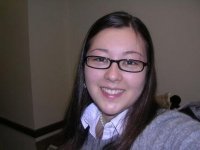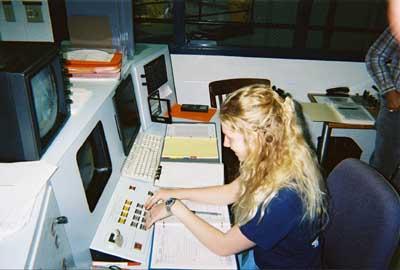Real Life Nuclear Engineers
, Reading time: 8 minutes
We asked some nuclear engineers to write about their experiences so far in their lives. Here’s what we got.
Janelle
Janelle has worked in utilities and in grad-school
 I worked as a nuclear engineer at an electric utility, where my main
job function was to perform core designs and related analyses for a
three-unit PWR plant. The department I worked in was responsible for
the entire fuel cycle of our nuclear units–from procuring the fuel
from vendors, to storing the used fuel in dry casks and used fuel
pools. For every operating cycle of each unit, we followed a
step-by-step procedure that began with a core design, and proceeded to
multiple safety analyses for all sorts of possible accident
configurations, fuel procurement and inspection, power distribution
and burnup monitoring during operation, and finally criticality and
safety assessments for storing the used fuel after in-reactor
operation.
I worked as a nuclear engineer at an electric utility, where my main
job function was to perform core designs and related analyses for a
three-unit PWR plant. The department I worked in was responsible for
the entire fuel cycle of our nuclear units–from procuring the fuel
from vendors, to storing the used fuel in dry casks and used fuel
pools. For every operating cycle of each unit, we followed a
step-by-step procedure that began with a core design, and proceeded to
multiple safety analyses for all sorts of possible accident
configurations, fuel procurement and inspection, power distribution
and burnup monitoring during operation, and finally criticality and
safety assessments for storing the used fuel after in-reactor
operation.
When developing core designs, I figured out how to arrange the approximately 250 fuel assemblies in the core in the best possible configuration so as to maintain safety under all possible operating conditions and unexpected accident conditions. The core design incorporates partially-used fuel from previous operating cycles with fresh fuel–approximately 2/3 of the assemblies in the core are previously-used assemblies, while the remaining 1/3 is fresh fuel. Safety considerations for a core design include maintaining an even power distribution across all fuel assemblies–both axially and radially–as well as maintaining an even burnup distribution across the core. A major challenge for core designers is to balance safety of the design with operability and economic concerns.
Prior to working in industry, I interned at a national laboratory for two summers. There, I worked on regulatory and safety issues for the transportation of radioactive materials, including used nuclear fuel. I contributed to the development of a computer code that could determine various effects of transporting radioactive materials by truck or rail–effects including the probability of the vehicle being involved in an accident, probability of radioactive material container breach and radioactive material release, total dose to members of the public living and driving near the vehicle, and overall risk (risk = probability * consequence).
Ceris
Ceris held the title of youngest female nuclear reactor operator for a while.
 When I was a senior in high-school, there was a certain program that allowed me to use my off-hours
to do a research internship . There was an option where you could shadow professionals and I just
put nuclear as an interest. I got to go work at the university of Texas research reactor. The researcher there
made me her assistant and taught me about neutron activation. She had me analyse data. I’m surprised because I was such an idiot back then.
There were these guys there who were kind of obsessed with training people to be reactor operators. They asked if I wanted to try and I said,
“sure, whatever. I’ll do that.” I decided I was gonna do it in December and took my test in May, so I studied for like, 3 months. That’s all I
did when I went there - studied, and walked through the facility and memorized everything.. .and obviously learned how it all worked. I still did some
activation experiments, but I just looked at old tests and learned all the answers. The guy came from Washington DC to give me the test and his name was
Warren Erision. I remember him so well, he was assigned to the reactor so he knew them really well and they had told me about him before he showed up.
First I took the written part, ‘cause if you fail the written part they don’t waste their time with the oral. I passed that and then went to the oral part.
It’s just me and him in the control room and we just sit in there and talk. and then you have to do the part where you operate the reactor. and that part
is intense! There are all these books with some acronym, like standard operating procedures. They told me before hand, if you can’t remember how to do a pulse,
you can look in the book to look up how far to remove the rods or whatever. So I just put the rods where they’re supposed to be and withdrew the transient rod and pressed
the fire button and it went kapaw! People were out there watching it. So I got to impress people with my blue flash. After it was over, I just went to the bathroom and cried. But when I went back.
When I was a senior in high-school, there was a certain program that allowed me to use my off-hours
to do a research internship . There was an option where you could shadow professionals and I just
put nuclear as an interest. I got to go work at the university of Texas research reactor. The researcher there
made me her assistant and taught me about neutron activation. She had me analyse data. I’m surprised because I was such an idiot back then.
There were these guys there who were kind of obsessed with training people to be reactor operators. They asked if I wanted to try and I said,
“sure, whatever. I’ll do that.” I decided I was gonna do it in December and took my test in May, so I studied for like, 3 months. That’s all I
did when I went there - studied, and walked through the facility and memorized everything.. .and obviously learned how it all worked. I still did some
activation experiments, but I just looked at old tests and learned all the answers. The guy came from Washington DC to give me the test and his name was
Warren Erision. I remember him so well, he was assigned to the reactor so he knew them really well and they had told me about him before he showed up.
First I took the written part, ‘cause if you fail the written part they don’t waste their time with the oral. I passed that and then went to the oral part.
It’s just me and him in the control room and we just sit in there and talk. and then you have to do the part where you operate the reactor. and that part
is intense! There are all these books with some acronym, like standard operating procedures. They told me before hand, if you can’t remember how to do a pulse,
you can look in the book to look up how far to remove the rods or whatever. So I just put the rods where they’re supposed to be and withdrew the transient rod and pressed
the fire button and it went kapaw! People were out there watching it. So I got to impress people with my blue flash. After it was over, I just went to the bathroom and cried. But when I went back.
Etienne
Etienne works in the nuclear industry in Paris, France.
Areva enrolled me as a neutronics engineer 10 months ago, a time that let me get a clear vision of my job. This article exposes my goals and how I reached them. We will discover what makes my job interesting or boring, depending on the day, and I will finally expose my feeling about it to give an answer to Nick’s question: What is a nuclear engineer?
My work is to study an accident called the “one drop uncontrolled extraction”. The exact description of the accident is useless in order to understand my job so I will try to explain what means “performing a methodology of study”. A nuclear reactor, like any high technology and high safety product such as a plane, firstly is designed by engineers. Before building the first one, a safety commission studies very precisely the plant and perform very rigorous tests. Afterwards you get a license which gives you the authorization to build several plants. The problem is that your plant is not exactly the same as the model used during the safety instruction, consequently it has to be demonstrated that the plant still satisfies the safety requirements. Fortunately, the whole safety analysis is not repeated, you just need to show that the plant satisfies some points, chosen such in a way that the whole plant safety is established. This is exactly what is my job: find the few key points we need to check in order to be sure our plant would stay safe in case of accident. Furthermore, the method is used every time the reactor is refueled.
In order to establish those points I need to perfectly know what happens during the accident. It means I need to run simulations of the transient in all conditions, on several type of reactors. To give numbers, I guess I have run more than a thousand simulations during my 10 months of work in order to be able to extract the criterias that are going to be studied each time some new fuel is loaded in the plant.
This leads me to talk about a difficulty I encountered during my first months: each time you present a result, being able to know all the hypotheses you made - this can become tough when you run so many calculations! This is a very essential point in case a methodology error would later be discovered; we need to come back to our calculations in order to check whether or not the safety demonstration is still valid or not. Fortunately those cases are rare and anyway thanks to our data organization we would be able to check very quickly.
Something else very specific to my job is that the study has to be as accurate as possible. We are told to take the time we need in order to be really sure that our analysis is the right one. Consequently we are the lucky ones who are not so stressed by the time and who can go really deep in the analyses. We eventually have a very good understanding or the accident which is really pleasant. On the other hand, we don’t have many interactions with other fields of study that can be very interesting.
FEELINGS
Even though my first time were really hard especially because of data losses and because of the high number of parameters you have to adjust for each transient simulation. A mistake is quickly done and several of them were found in my work. Meanwhile, with time going on, I really improve and start to forget those practical problems and to focus on more theoretical and interesting subjects.
As a conclusion I would like to express on my joy of being part of the nuclear renaissance and for a pollution-free energy source. I can see it in my everyday life with the numerous new employees we welcome in our department, it is very pleasant to work in a young and motivated atmosphere.
Have a story?
Send us your story if you’d like to get on this page!